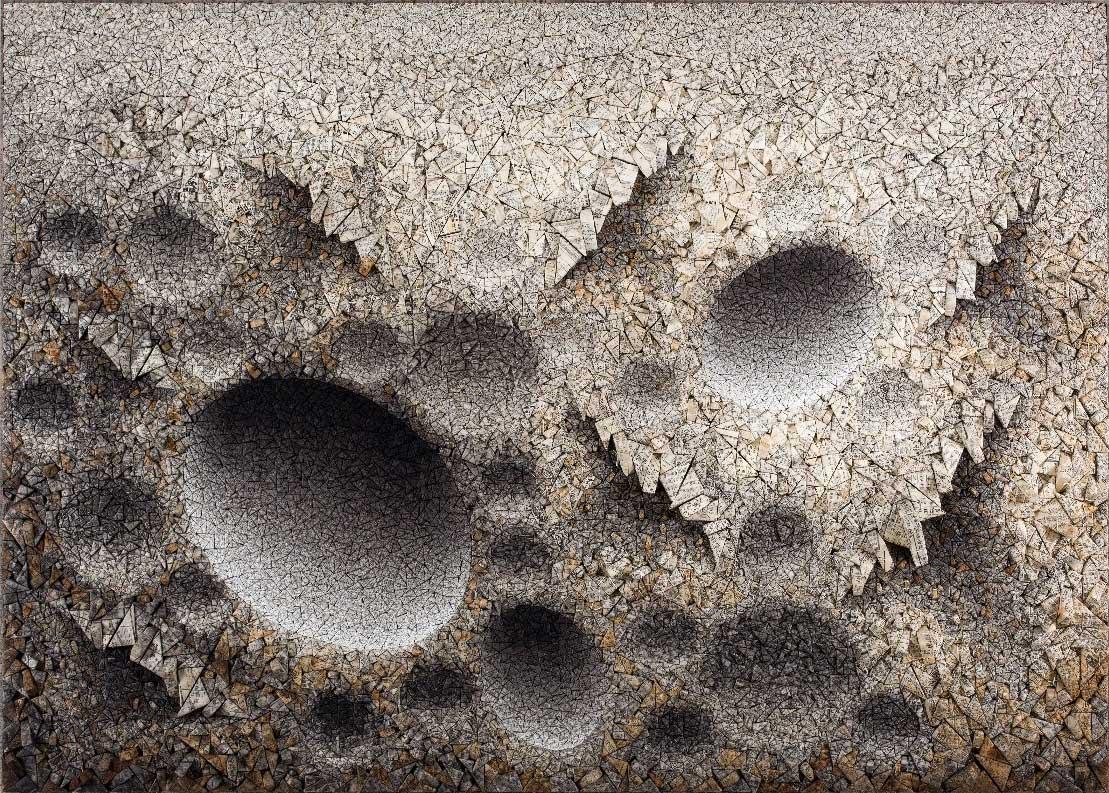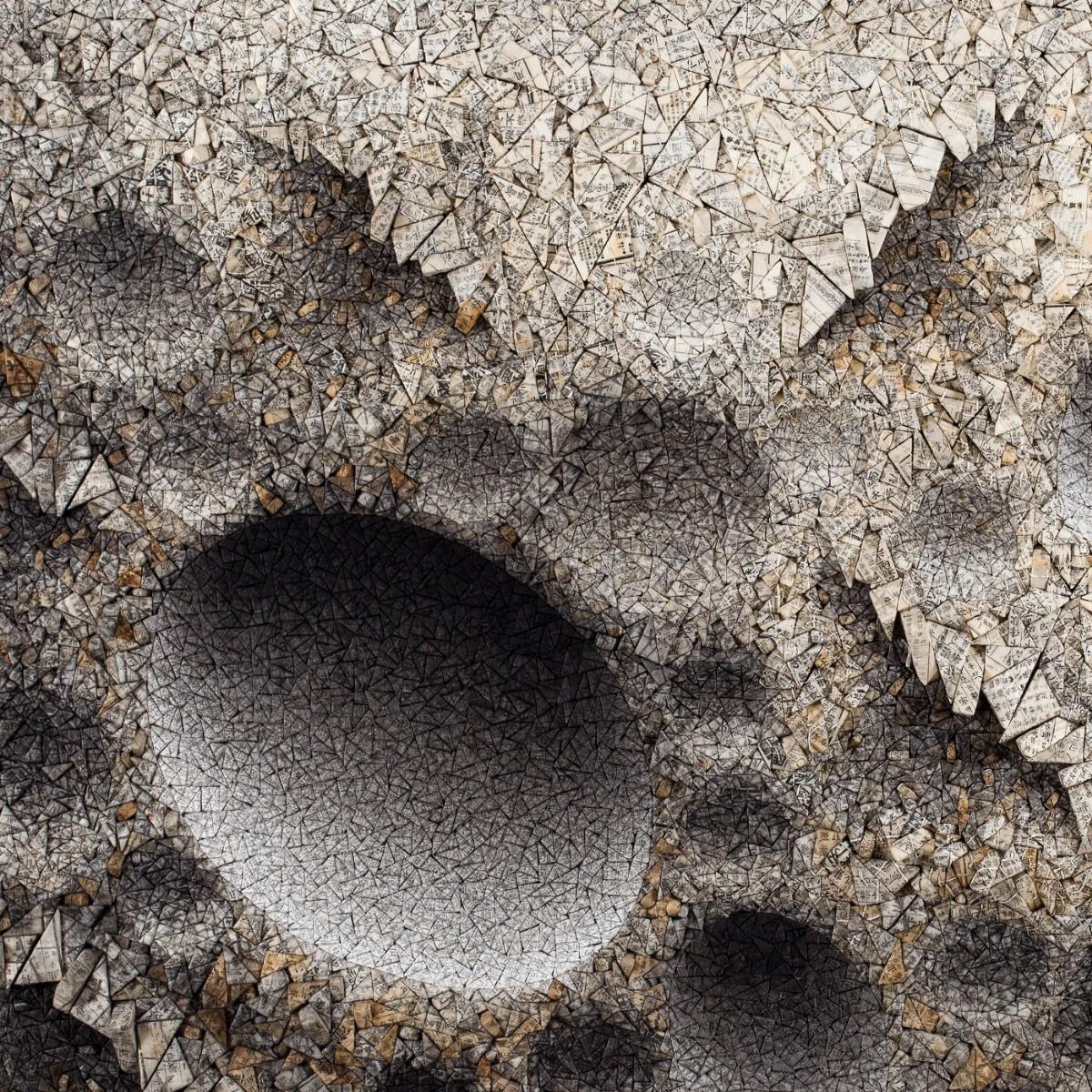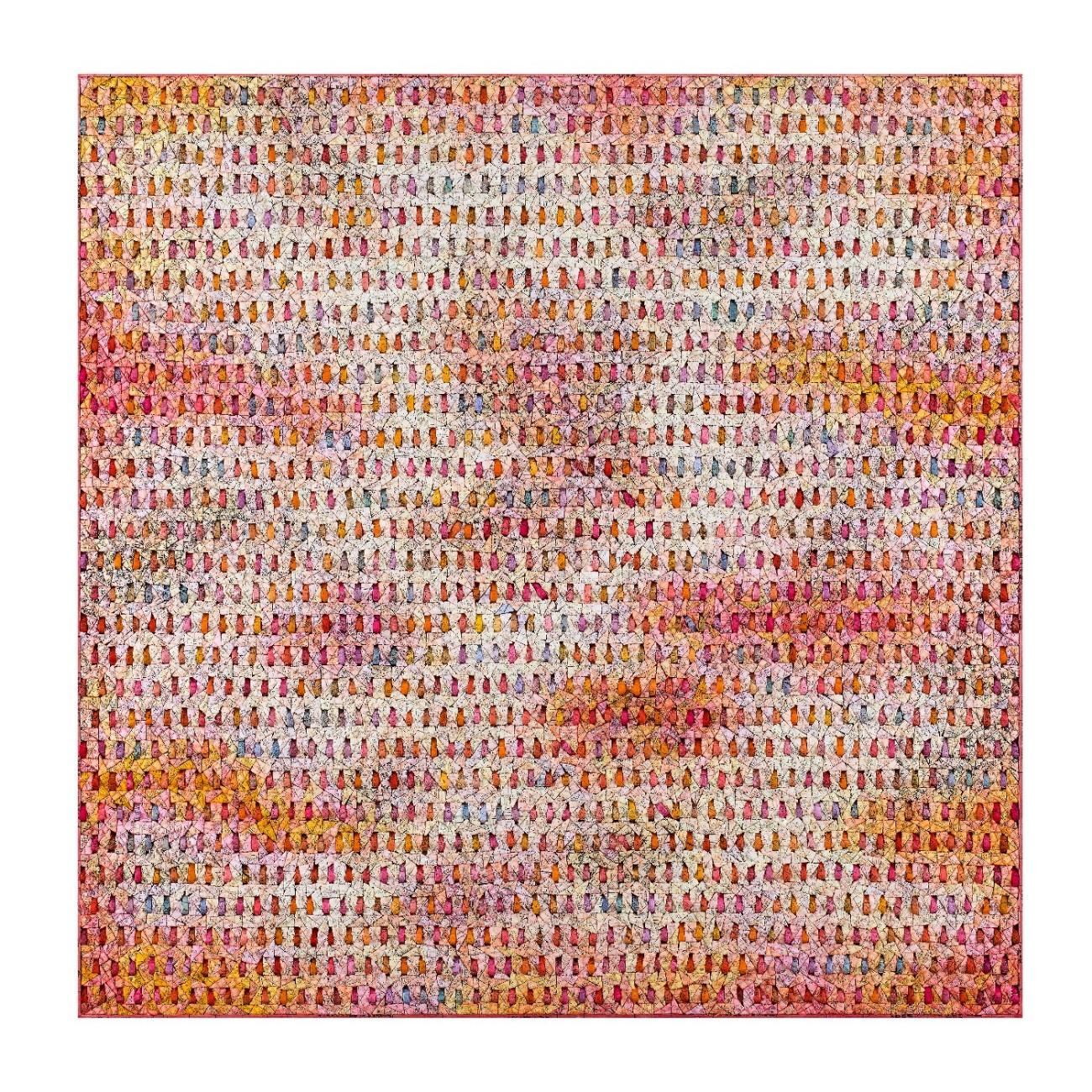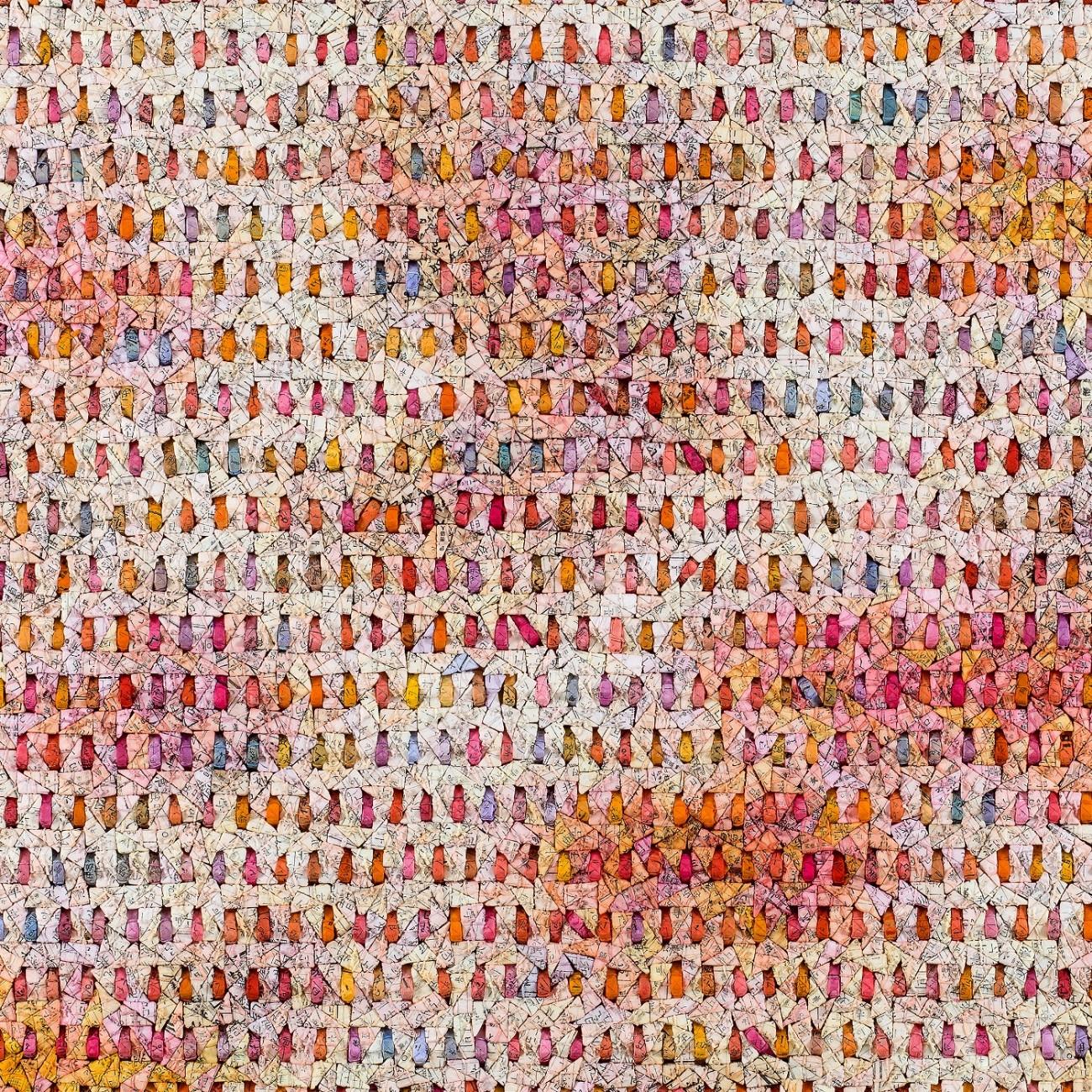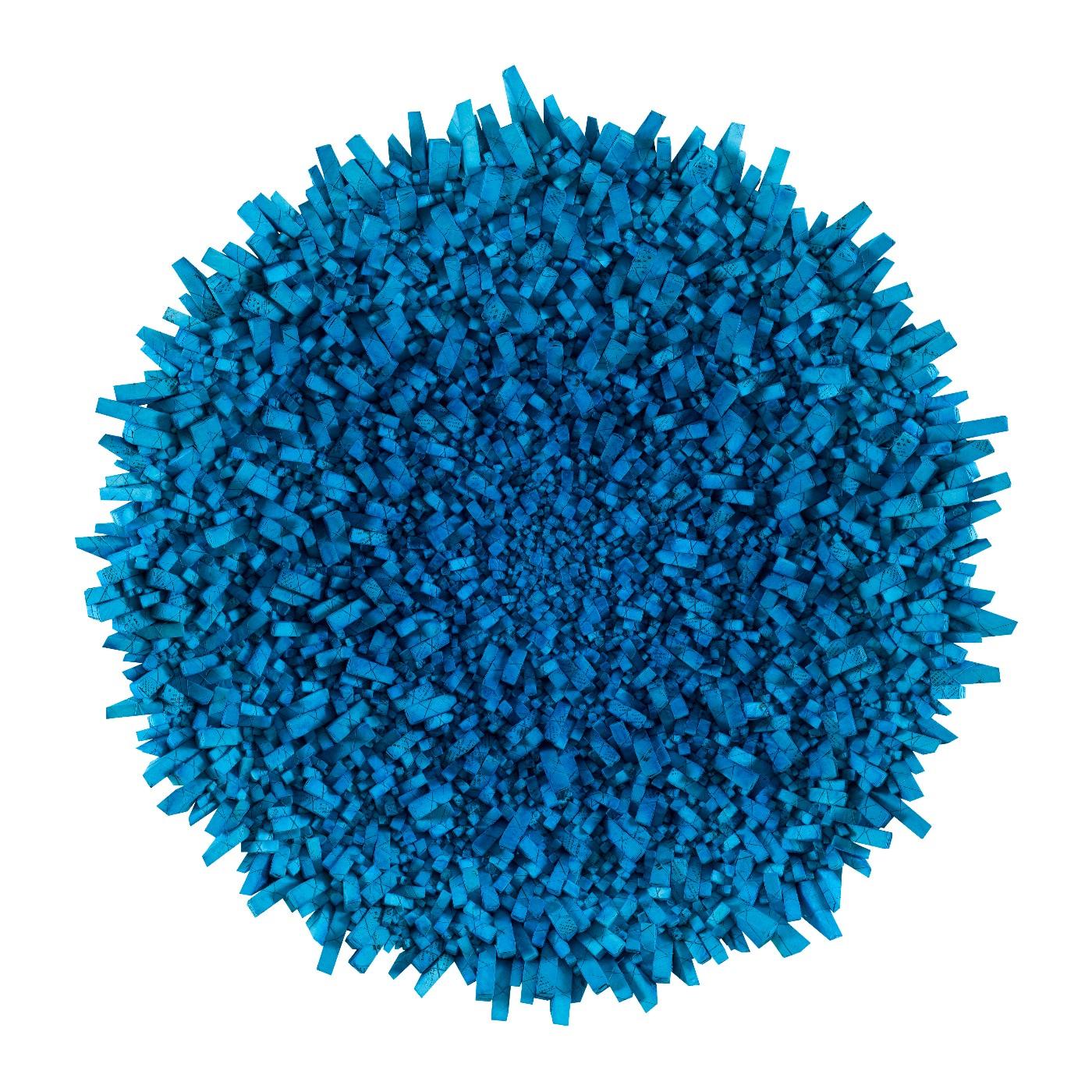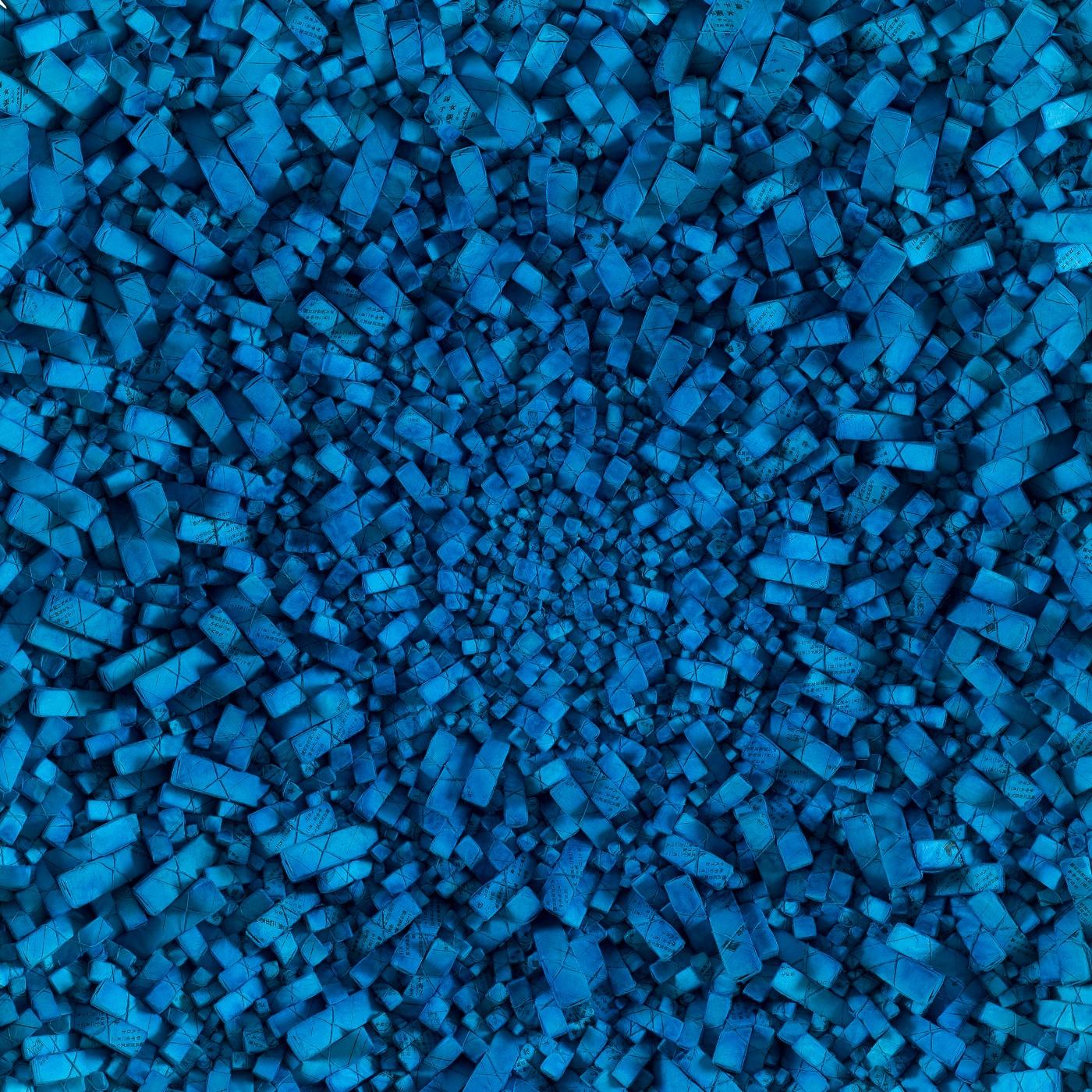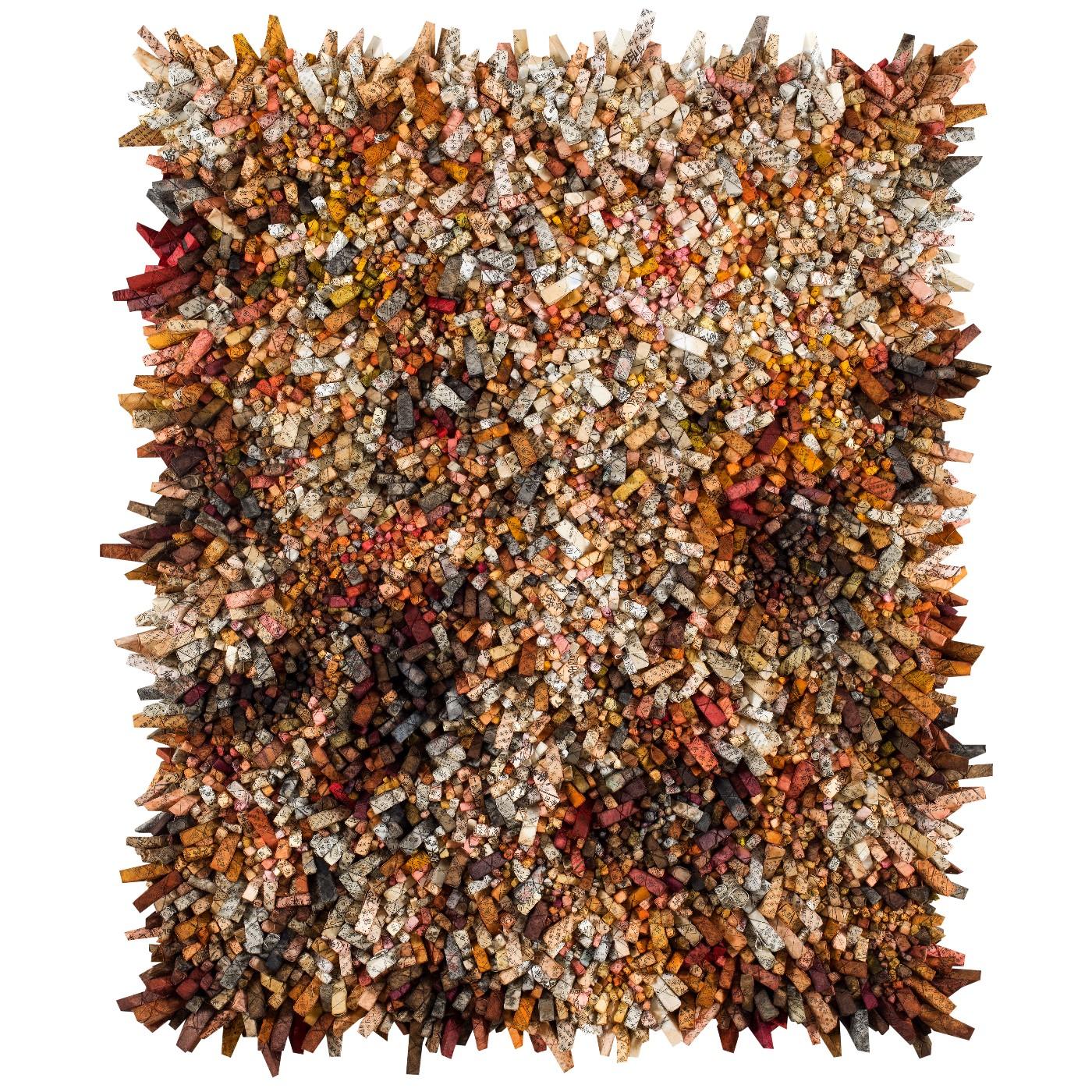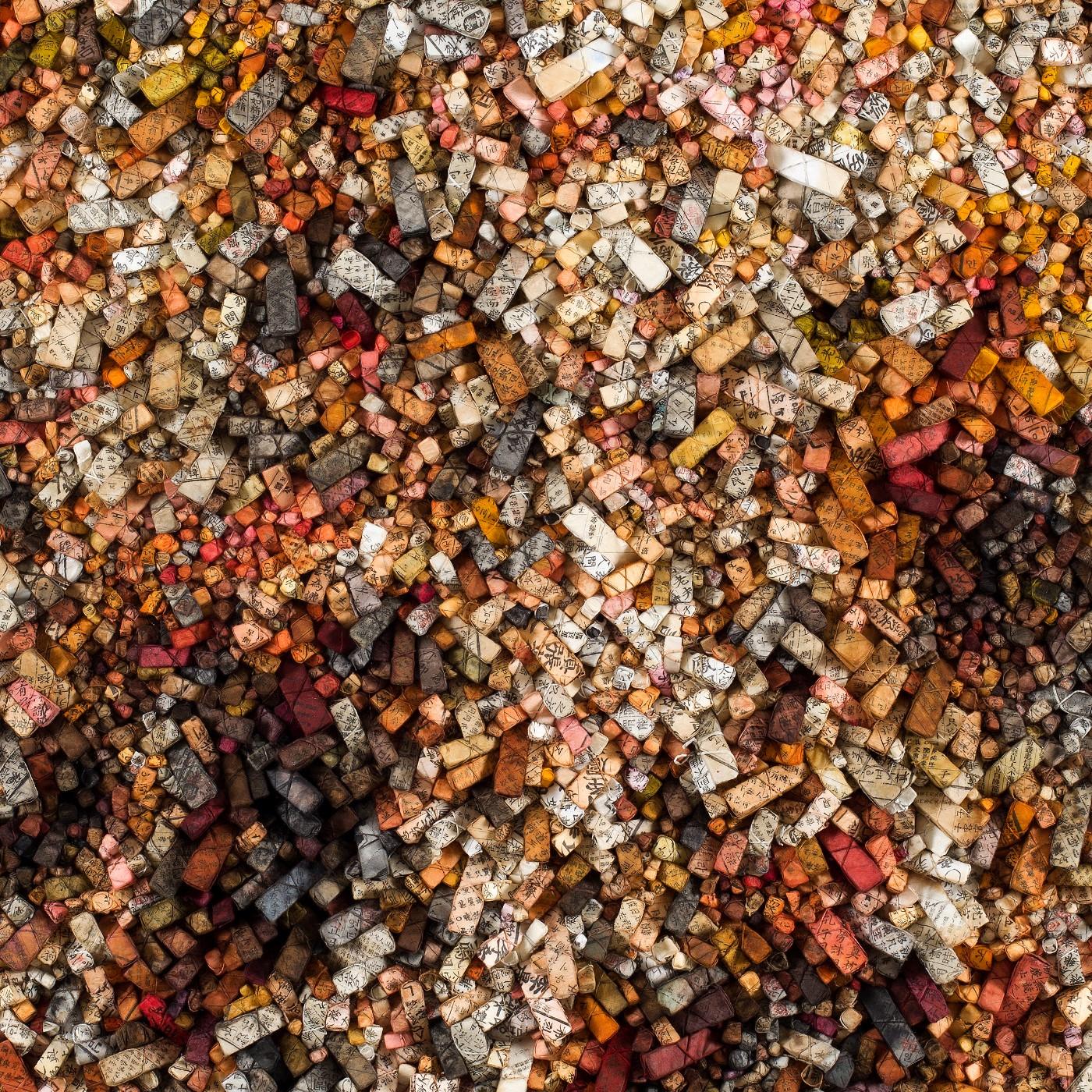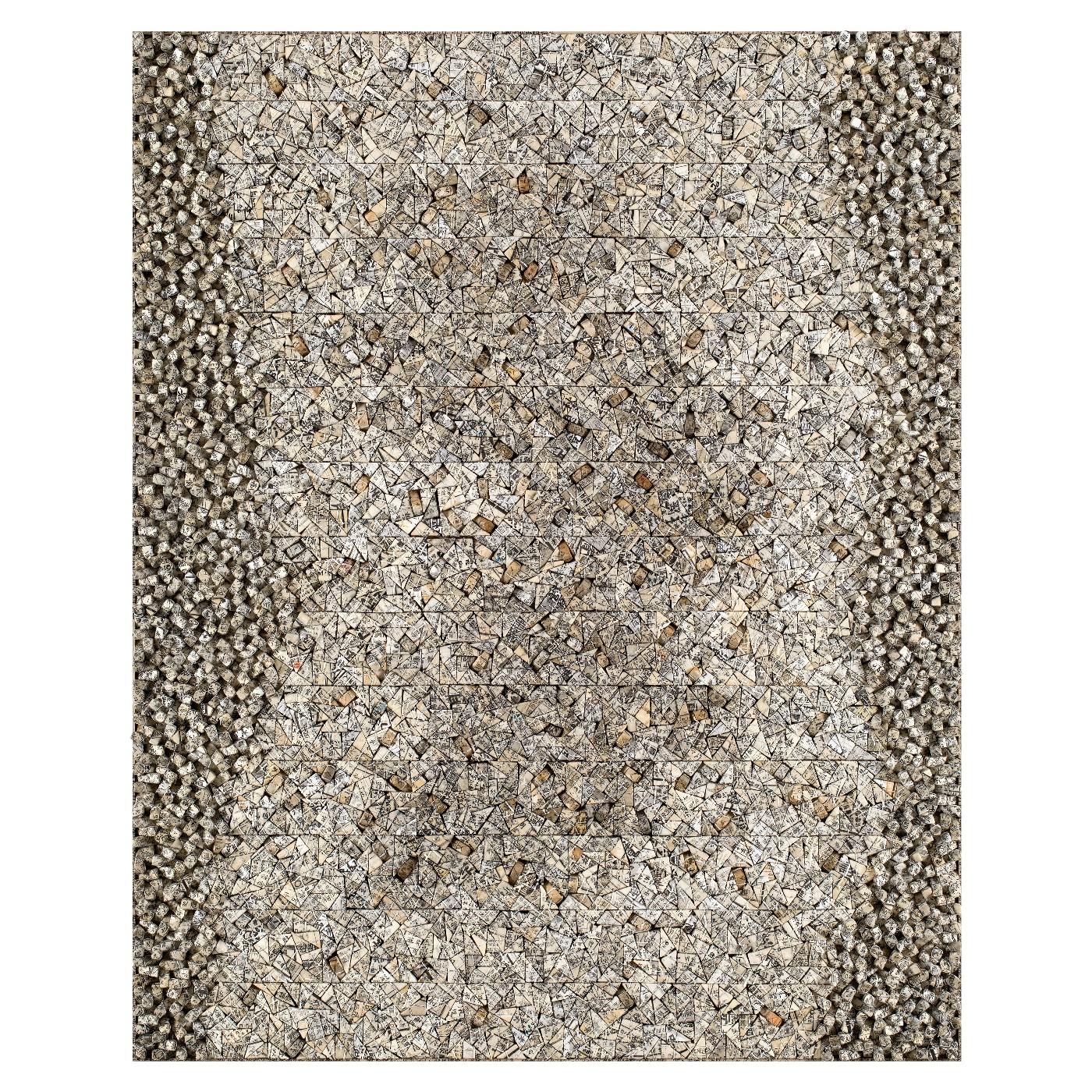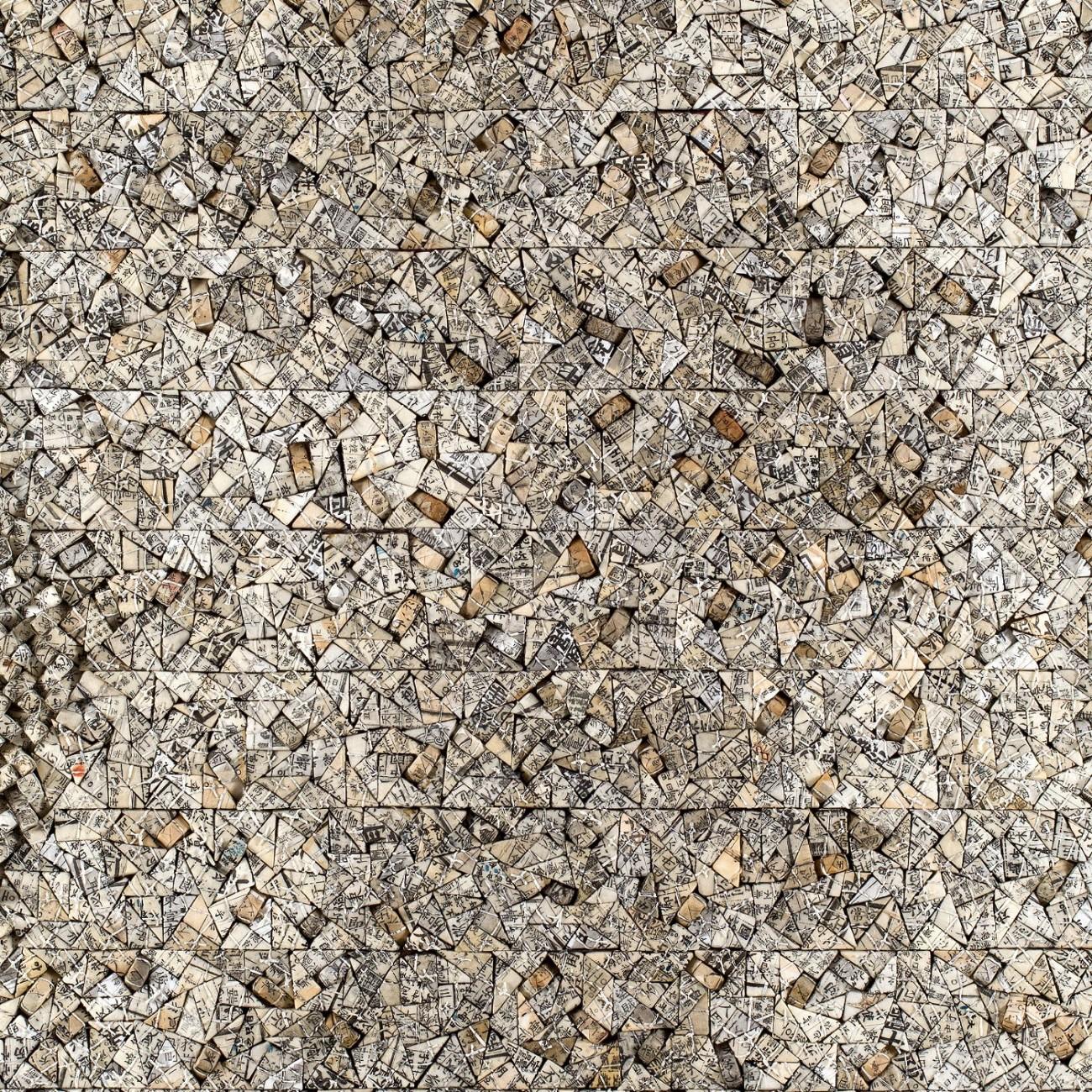These cones are reminiscent of packets of hanji-wrapped medicinal herbs Chun saw in childhood visits to the local doctor. Hanji has deep historical and spiritual significance in Korean culture. Chun’s work merges the traditions of his past with the artistic freedom he experienced as a 1970’s American college student introduced to Abstract Expressionism.
He carefully sources his hanji from antique books between fifty and a hundred years old. “Each has its history and each generation of our ancestors’ joys and sorrows can be seen in the thousands of aggregated fingerprints that make my work even more mystical and precious. It’s almost as if these fingerprints are trying to have conversation with me, to explain their reasons for being there.” His tactile creations resemble geologic formations, calling to mind the limestone hollows of caves, filled with bristling stalagmites and wondrous crystalline growths, or the mysterious cratered surface of the moon.




